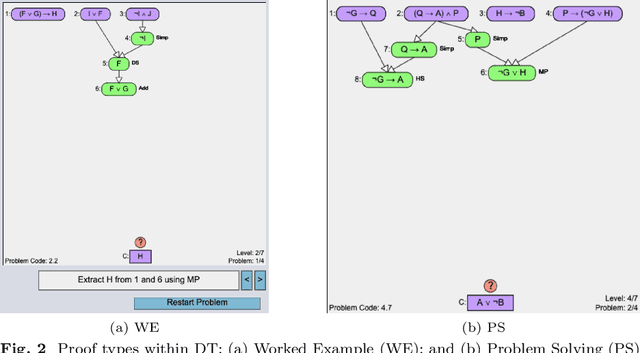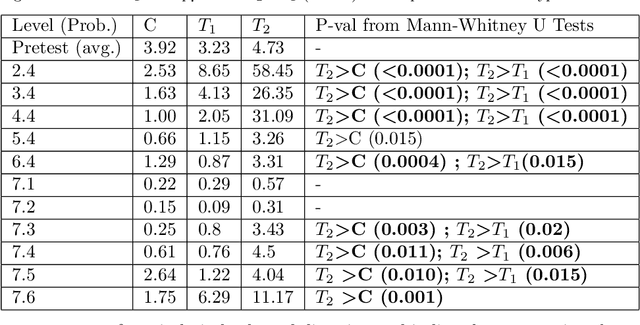Behrooz Mostafavi
Investigating the Impact of Backward Strategy Learning in a Logic Tutor: Aiding Subgoal Learning towards Improved Problem Solving
Jul 27, 2022



Abstract:Learning to derive subgoals reduces the gap between experts and students and makes students prepared for future problem solving. Researchers have explored subgoal labeled instructional materials with explanations in traditional problem solving and within tutoring systems to help novices learn to subgoal. However, only a little research is found on problem-solving strategies in relationship with subgoal learning. Also, these strategies are under-explored within computer-based tutors and learning environments. Backward problem-solving strategy is closely related to the process of subgoaling, where problem solving iteratively refines the goal into a new subgoal to reduce difficulty. In this paper, we explore a training strategy for backward strategy learning within an intelligent logic tutor that teaches logic proof construction. The training session involved backward worked examples (BWE) and problem-solving (BPS) to help students learn backward strategy towards improving their subgoaling and problem-solving skills. To evaluate the training strategy, we analyzed students' 1) experience with and engagement in learning backward strategy, 2) performance, and 3) proof construction approaches in new problems that they solved independently without tutor help after each level of training and in post-test. Our results showed that, when new problems were given to solve without any tutor help, students who were trained with both BWE and BPS outperformed students who received none of the treatment or only BWE during training. Additionally, students trained with both BWE and BPS derived subgoals during proof construction with significantly higher efficiency than the other two groups.
 Add to Chrome
Add to Chrome Add to Firefox
Add to Firefox Add to Edge
Add to Edge